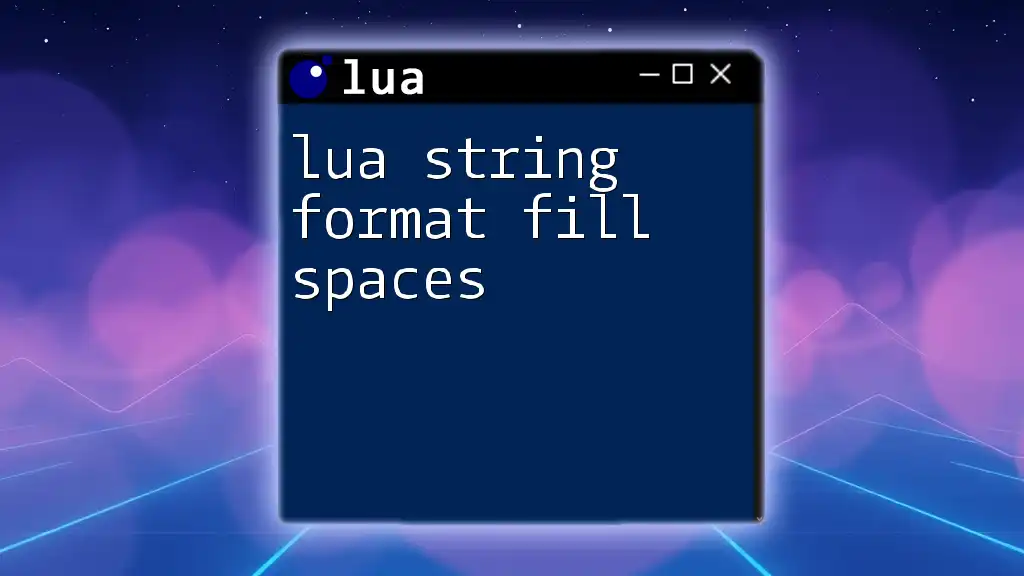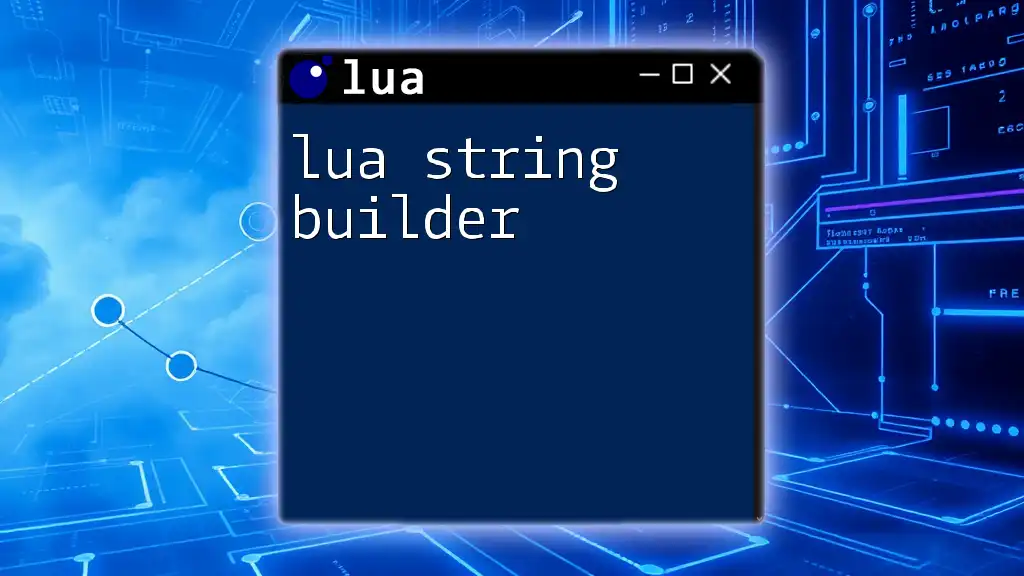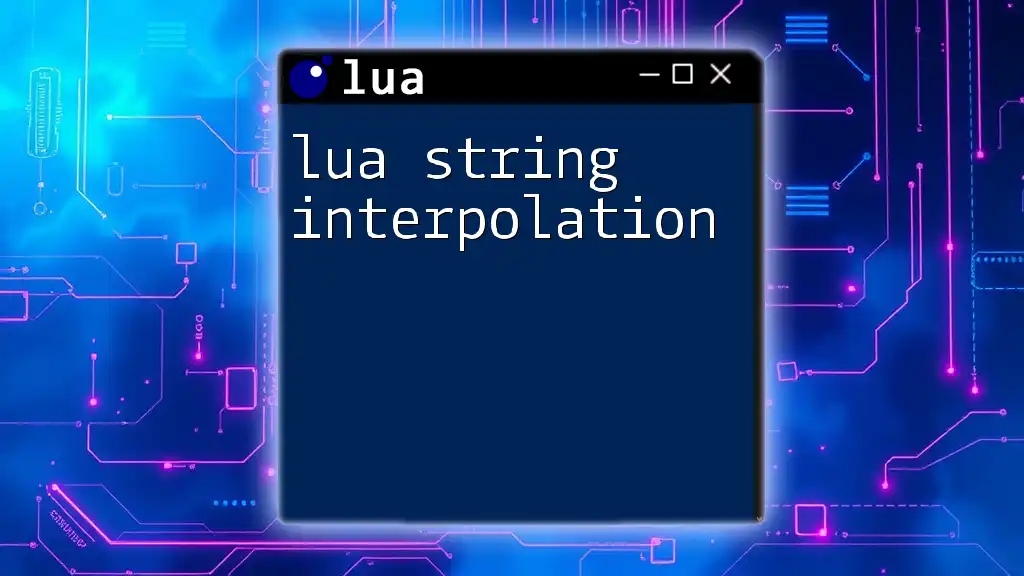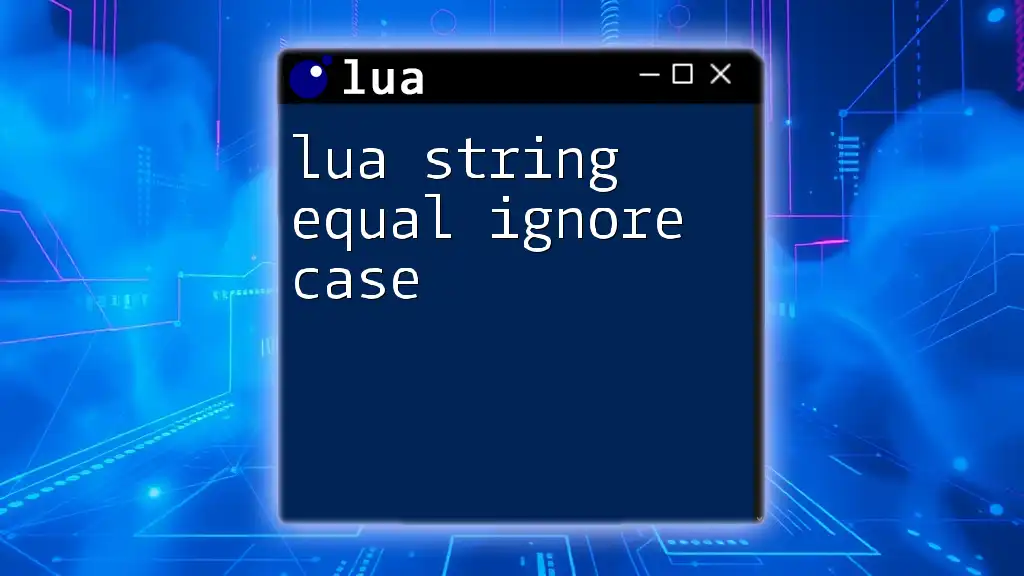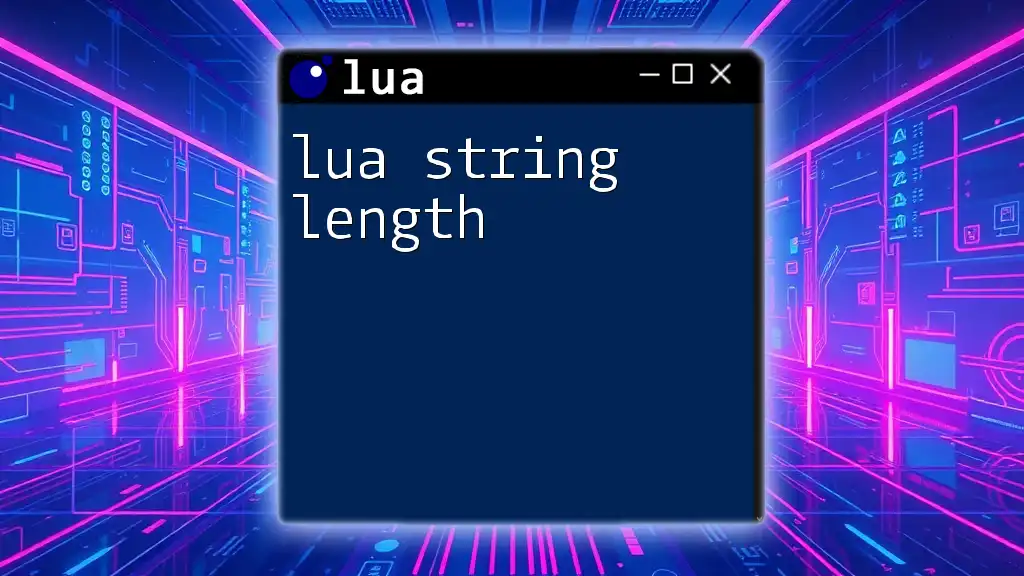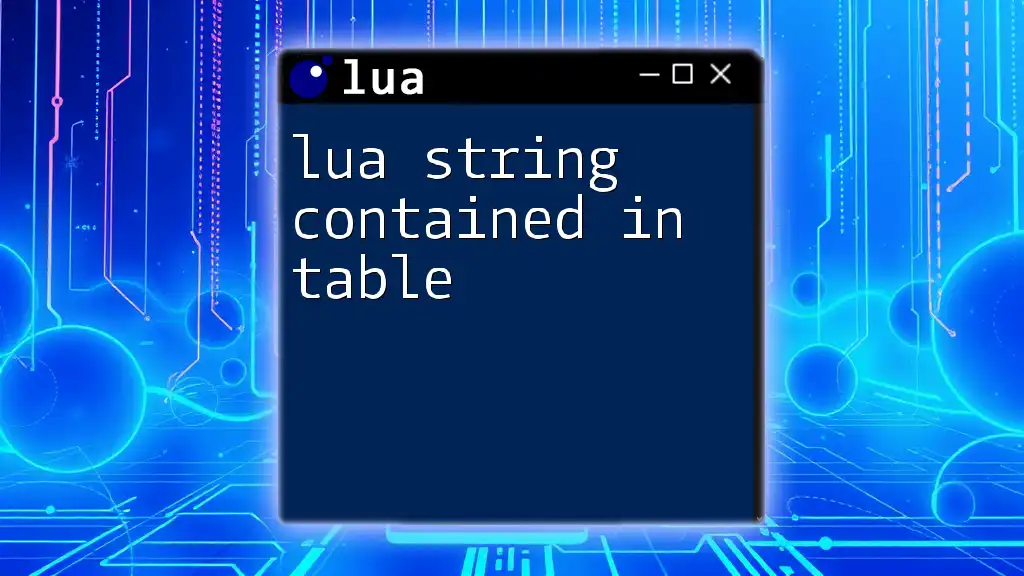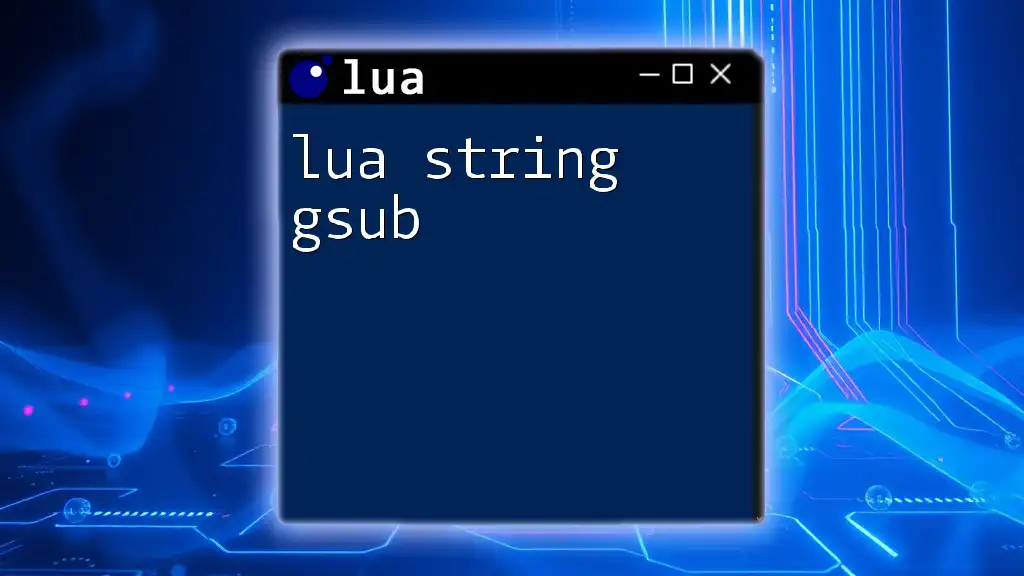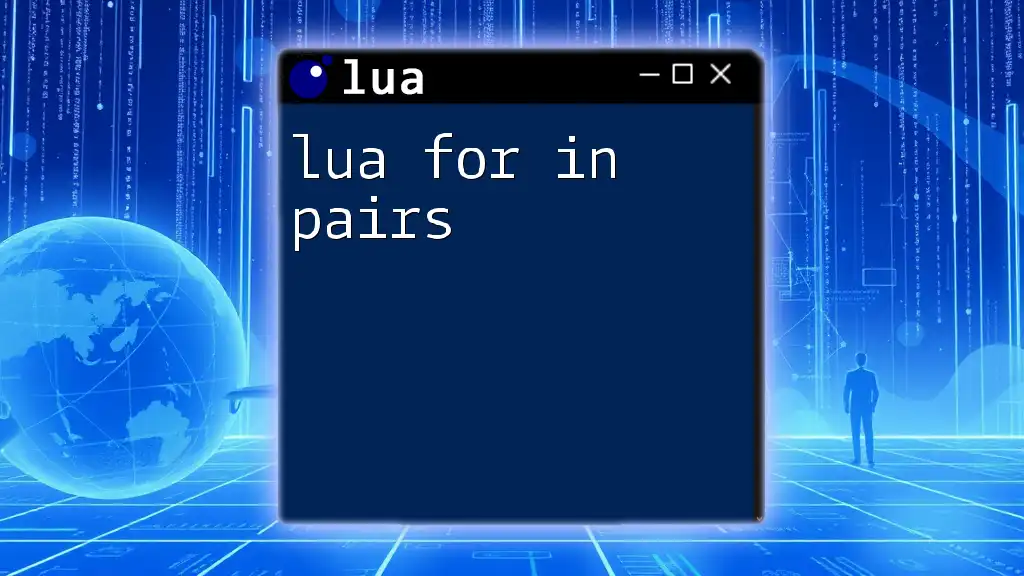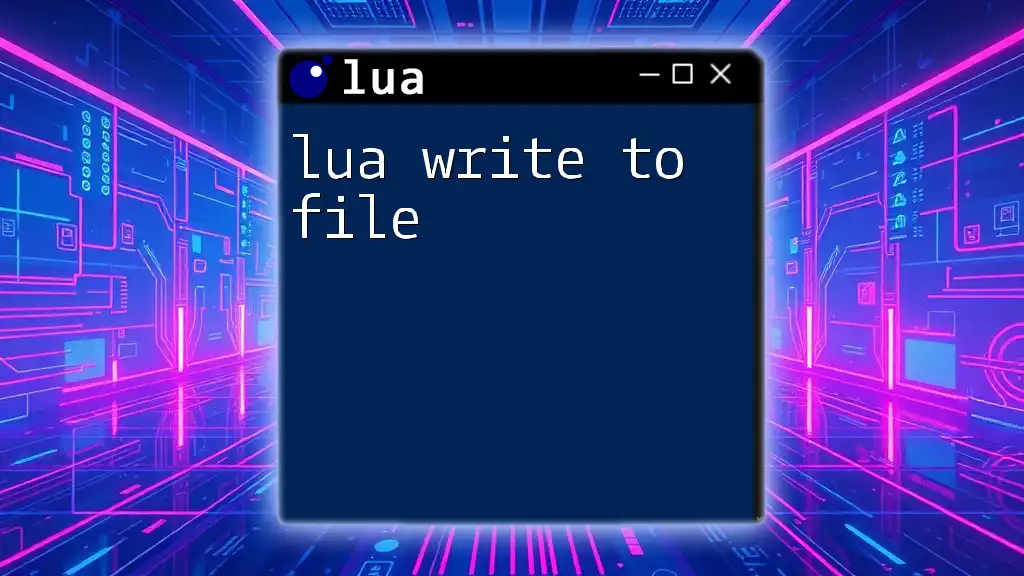Lua's `string.format` function allows you to create formatted strings by filling in spaces and controlling the output's alignment and width.
Here's a code snippet demonstrating how to use it:
-- Lua string format example to fill spaces
local name = "John"
local age = 28
local formattedString = string.format("Name: %-10s Age: %3d", name, age)
print(formattedString) -- Output: Name: John Age: 28
Understanding Lua String Formatting
What is String Formatting?
String formatting is a critical technique used in programming to control how data is presented. In Lua, this functionality allows developers to customize output by inserting variables into strings while maintaining a consistent visual layout. This precision is especially useful in reports, logs, and user interfaces.
Overview of `string.format`
The `string.format` function is a powerful tool in Lua that allows you to format strings effectively. Its basic syntax follows this pattern:
string.format(formatString, value1, value2, ...)
Here, `formatString` defines how subsequent values will be formatted when they are converted into a string. Understanding this function is crucial for mastering how to fill spaces in your formatted strings.
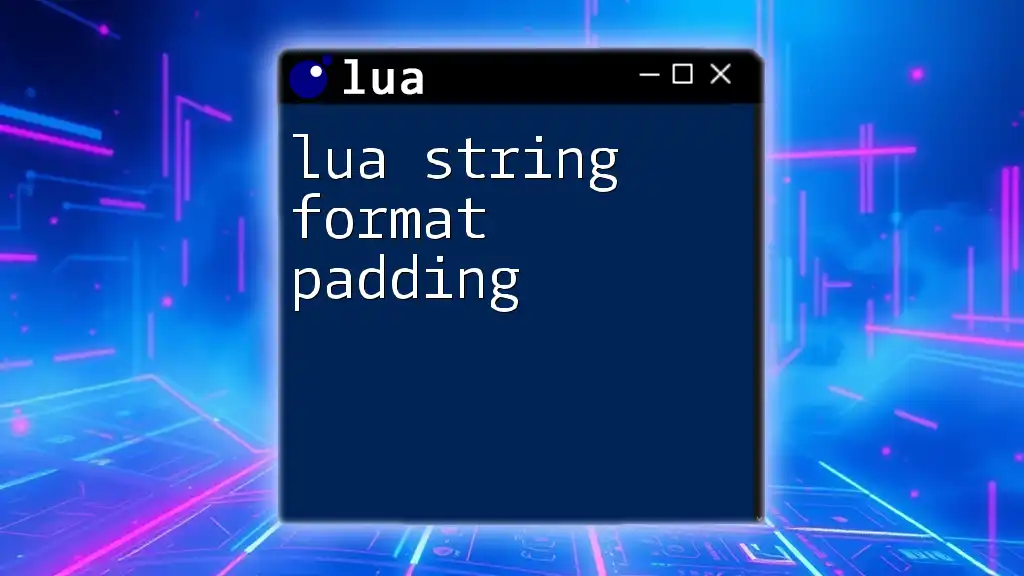
Basic String Formatting
Formatting Numbers
Number formatting is one of the most common uses of `string.format`. Lua provides format specifiers that can be used to control the display of integers and floating-point numbers.
For example, if you want to display a number with leading zeros, you can use the following code:
local formattedNumber = string.format("%03d", 5) -- Output: 005
print(formattedNumber)
In this case, `%03d` tells Lua to format the number as an integer (`d`) with at least three digits. If the number has fewer digits, it fills the empty spaces with leading zeros.
Formatting Strings
Just as you can format numbers, you can format strings to include variables dynamically.
Consider the following example:
local name = "Alice"
local formattedString = string.format("Hello, %s!", name) -- Output: Hello, Alice!
print(formattedString)
Here, `%s` serves as a placeholder for the string variable `name`. The resulting output neatly prints a personalized greeting.

Filling Spaces in Strings
Using Format Specifiers for Spaces
One of the most essential features of `string.format` is filling spaces in strings. Various format specifiers determine how text and numbers are aligned within a defined width.
For instance, you may want to right-align a string within a specific field:
local formattedSpacing = string.format("|%10s|", "Lua") -- Output: | Lua|
print(formattedSpacing)
In this code snippet, `|%10s|` means to format the string `Lua`, ensuring it occupies 10 characters in width. The output fills any empty spaces to the left with spaces, producing a cleanly aligned result.
Left and Right Alignment
In addition to filling spaces, you can control the alignment of text using format specifiers.
Left Alignment
To left-align a string, you can use a `-` sign before the width specifier:
local leftAligned = string.format("|%-10s|", "Lua") -- Output: |Lua |
print(leftAligned)
Here, the text "Lua" is left-aligned within a field of 10 characters, filling the right side with spaces.
Right Alignment
Conversely, the default behavior of `string.format` is to right-align, as shown previously:
local rightAligned = string.format("|%10s|", "Lua") -- Output: | Lua|
print(rightAligned)
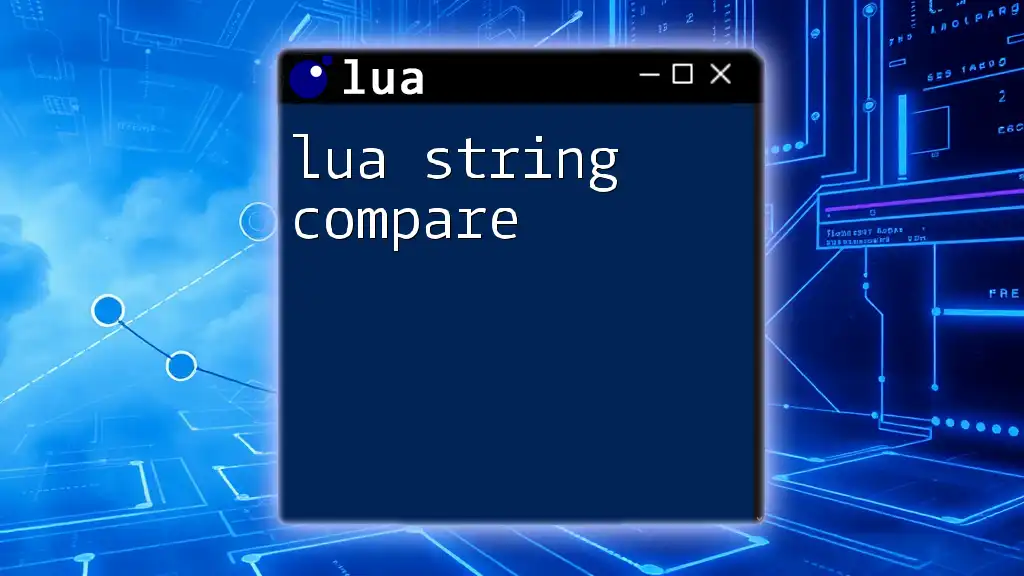
Advanced String Formatting Techniques
Using Width and Precision
You can take formatting a step further by specifying both width and precision, particularly for numbers. For example:
local formattedWidthPrecision = string.format("|%8.3f|", 12.34567) -- Output: | 12.346|
print(formattedWidthPrecision)
In this instance, `%8.3f` indicates that we want to format a floating-point number that takes up a minimum of eight characters total, with three decimal places. This precision ensures the number is both neat and readable.
Combining Multiple Format Specifiers
You can also combine several format specifiers in a single `string.format` call, providing a powerful way to present multiple pieces of data uniformly:
local combinedFormat = string.format("Name: %-10s | Age: %03d | Score: %.2f", "Alice", 5, 95.678)
-- Output: Name: Alice | Age: 005 | Score: 95.68
print(combinedFormat)
This code formats three different types of data: a string, an integer, and a floating-point number, each with its respective alignment and formatting rules.
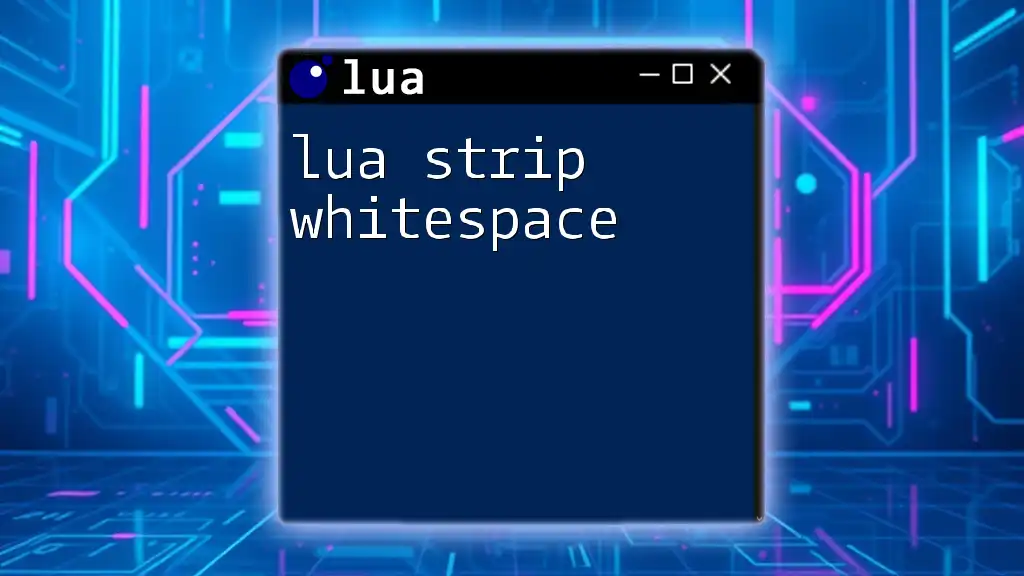
Common Use Cases for String Formatting
User Input Display
String formatting is instrumental in displaying user input in a uniform manner. For instance, when creating forms or reports, formatting ensures that all entries align correctly, making the information visually appealing and easy to read.
Logs and Debugging
Effective logging is crucial for debugging in software development. Utilizing formatted strings, you can produce structured log entries that help you trace program execution and identify issues swiftly.
Consider logging a user's actions in a formatted manner:
local username = "Alice"
local action = "logged in"
local time = os.date("%Y-%m-%d %H:%M:%S")
local logEntry = string.format("[%s] User: %-10s | Action: %s", time, username, action)
print(logEntry)
This example neatly formats the log entry, ensuring clarity in tracking user behavior.
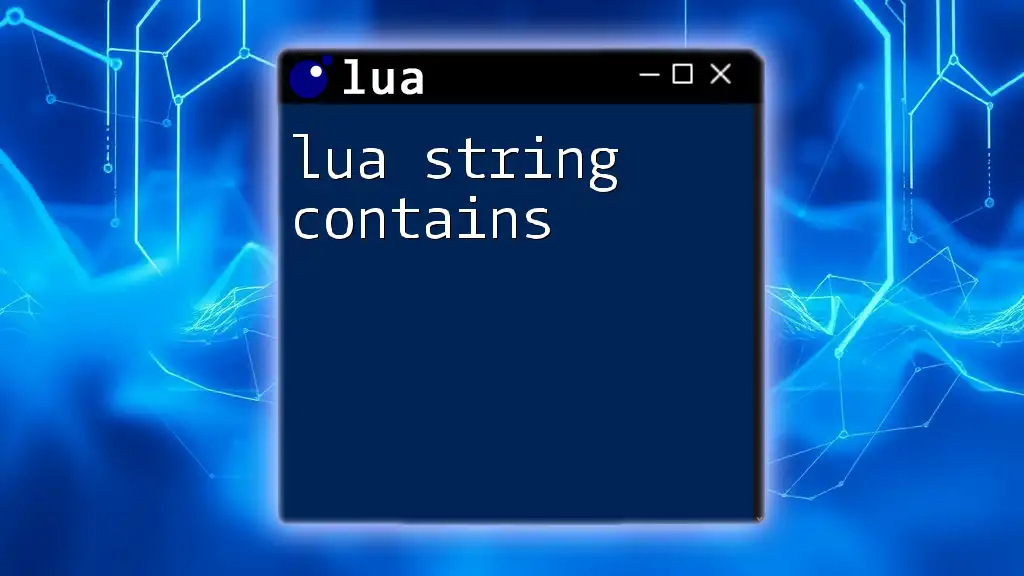
Performance Considerations
Impact on Performance
While string formatting used through `string.format` is powerful, it comes with performance considerations. Extensive use may slow down your program, especially in scenarios that demand high efficiency. It's wise to use complex formatting sparingly and revert to simpler concatenation when performance is critical.

Conclusion
In conclusion, understanding how to effectively utilize Lua string formatting, particularly how to fill spaces, enhances both the aesthetics and functionality of your code output. By mastering the `string.format` function, you can produce elegantly structured strings that are not only user-friendly but also functional in various programming scenarios.
The journey to becoming proficient in string formatting starts with practice. Explore and implement the concepts discussed here, and soon you will find yourself proficient in "lua string format fill spaces" techniques.

